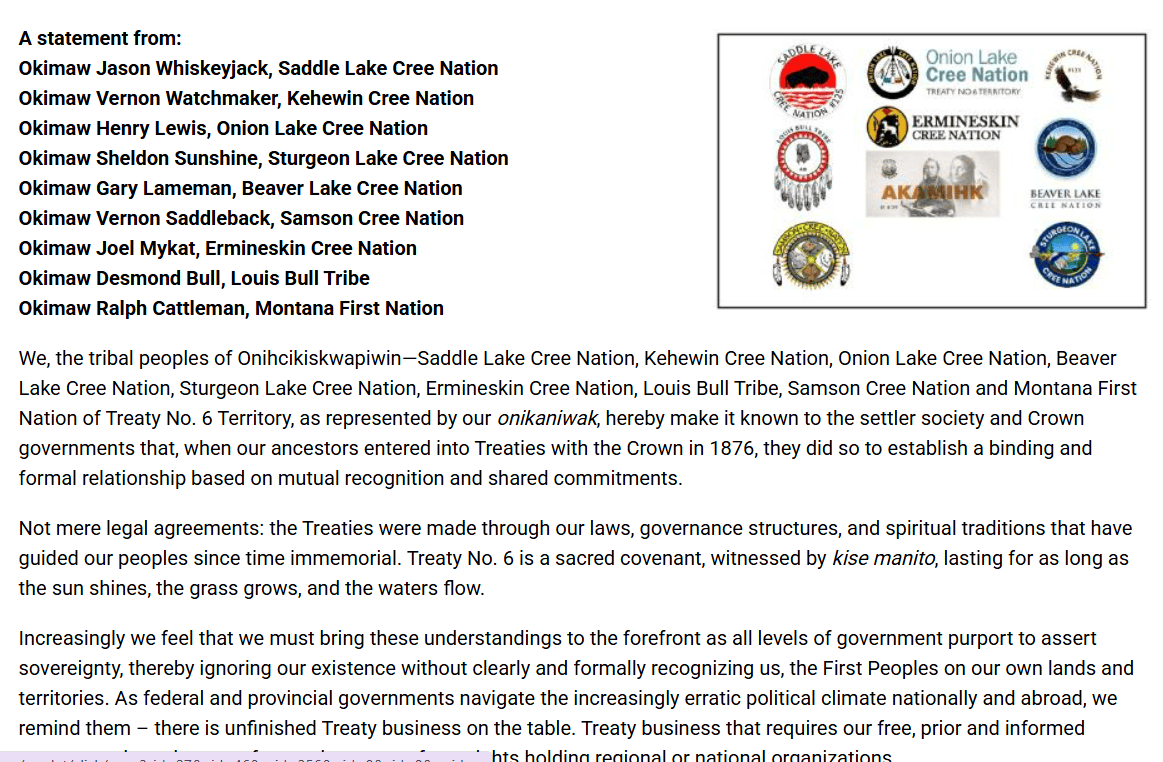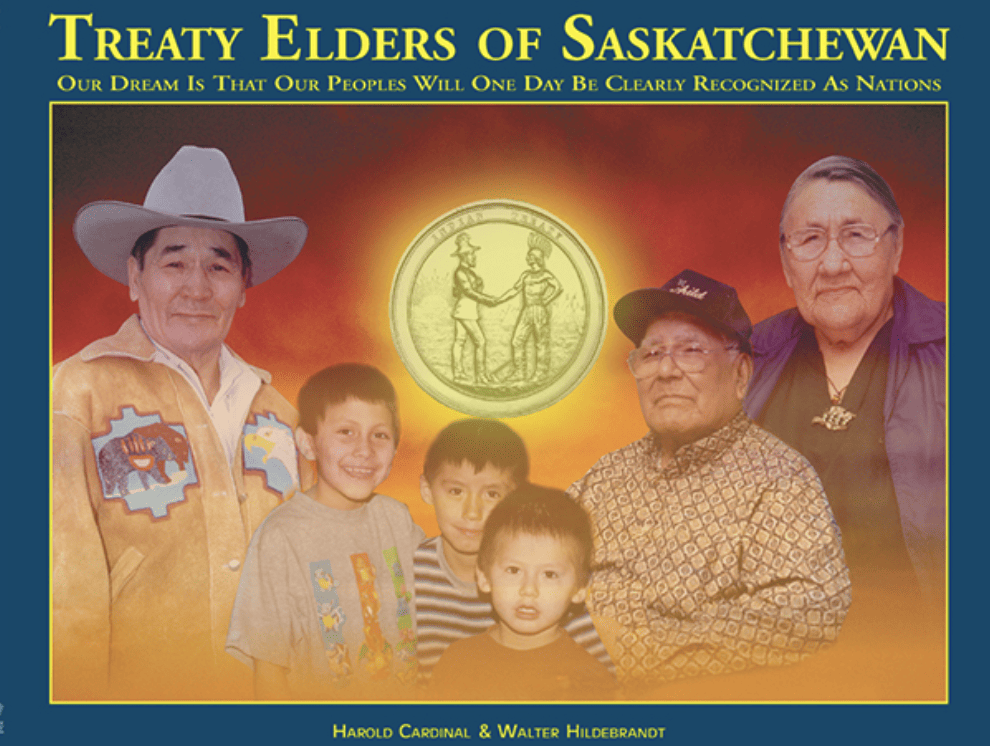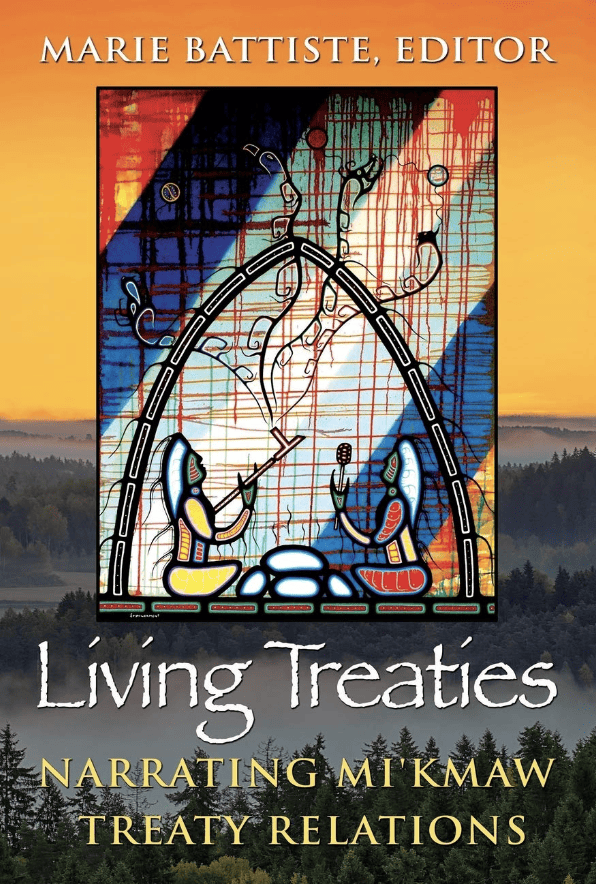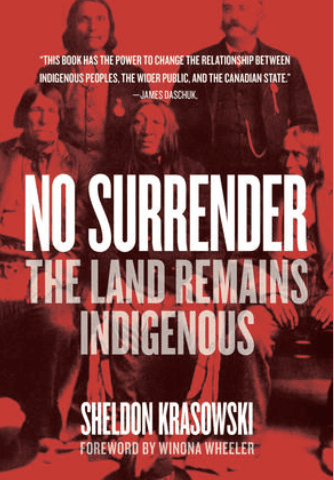Reasserting Sovereignty: Defending Treaty Nations and challenging the governments of Canada and Alberta
This statement, co-authored by First Nations leaders in Treaty 6 Territory, calls on the Province of Alberta, the Government of Canada, and the Crown (through King Charles the III) to uphold binding Treaty obligations that were agreed to in 1876.








